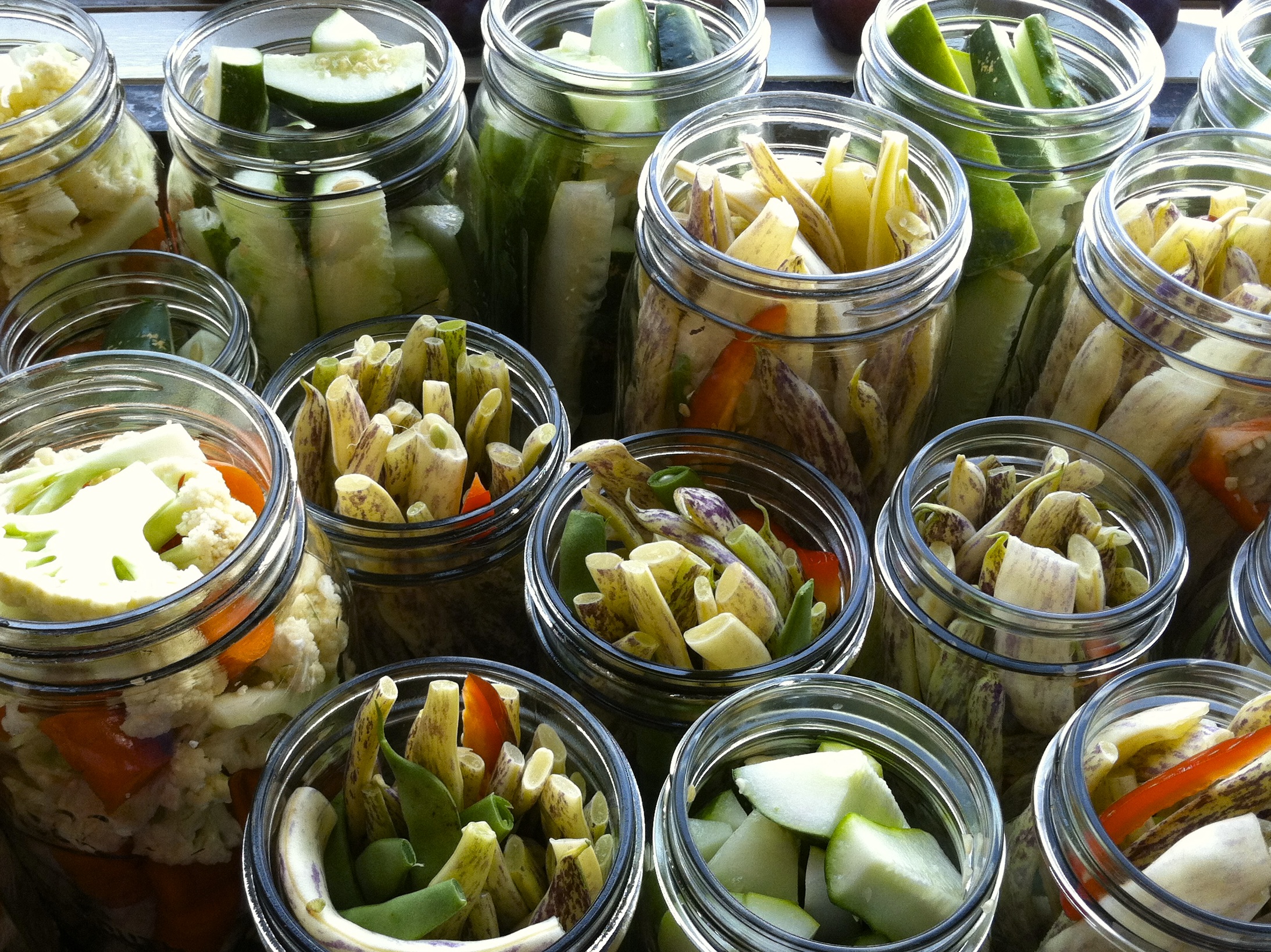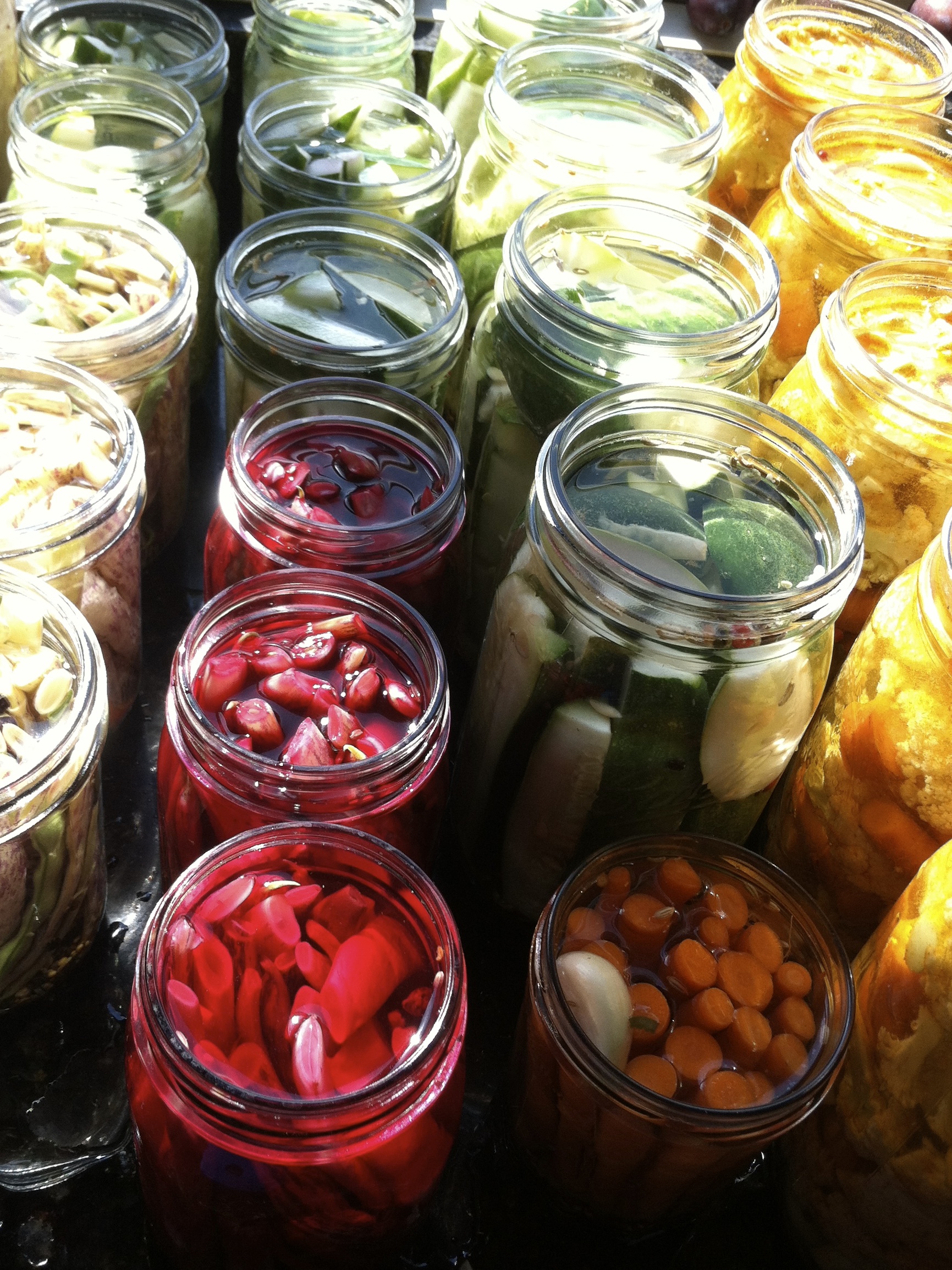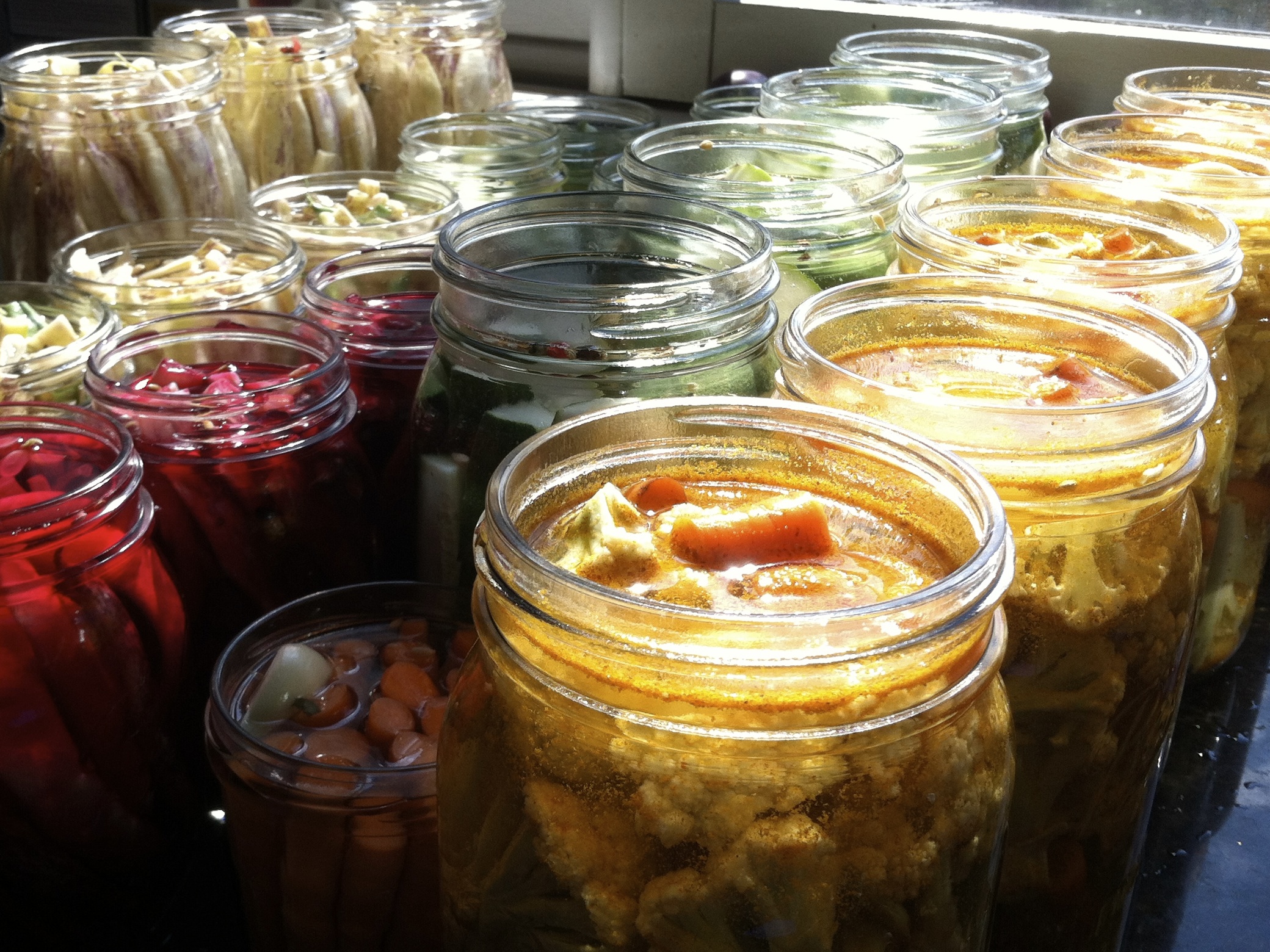One of the things I miss most while on The Big Trip, is canning and preserving in my kitchen at home. I have the preservation bug! I think it is a derivative of my nesting instinct — I always want to be harvesting and putting up food to use during the cold winter. My problem is finding time to actually use everything I preserve! Anyone want some pickles?
It’s been strange to be traveling and not able to make my usual jams, pickles, pestos, tomato sauces etc. To quench my thirst for preservation, I thought I’d share my experience last summer having a pickle extravaganza with my sister. We harvested tons of produce at Land’s Sake Farm in Weston, MA ,where she was working for the summer, and then spent the rest of the weekend putting it by. We made plum jam, tomato paste, frozen herbs in olive oil, and pickles galore!

There are countless options when it comes to pickling. We used green and purple beans, cucumbers, carrots, cauliflower, and beets, but don’t feel limited by our choices. With the exception of cukes, it’s generally best to use hard vegetables that will hold up over time in the pickle brine. You can focus on one type of pickle or follow our lead and make a bunch of combinations all at once. I have to say, it was a great way to get a lot of variety with only one day of canning.
We used a simple vinegar pickle brine as our base and tweaked it slightly for each different type of pickle. For example, the beets got added fennel seeds to play on their sweetness, extra hot peppers went into the beans, and the cauliflower and carrots got curry powder to add some spice.
Pickling Brine Ingredients
3 cups of vinegar (I like white vinegar and cider vinegar best and often use half and half of each)
3 cups of water
Note – you can make as much as you need for your pickles, but be sure to keep the ratio of vinegar to water 1:1
Pickling Spice Ingredients
1/2 cup whole peppercorns
1/2 cup whole mustard seeds
1/4 cup fennel seeds
1/4 cup red pepper flakes
Optional additions – coriander, all spice, fresh dill or dill seed, curry powder, cinnamon
Other Ingredients
10 peeled cloves of garlic (2 – 3 per jar)
1 fresh hot pepper thinly sliced (2 – 3 per jar)

I like to begin by packing my jars with the dry pickling spices, garlic, hot peppers and any special spices I’m using. Next, carefully add in your veggies. The idea is to cram in as many as possible, while still maintaining the integrity of each piece. I often find it’s helpful to hold the jar sideways while I’m filling.
Finally, fill the jars with the pickling brine, making sure to cover all the ingredients completely. Use a damp clean cloth to wipe off the jar rims and cover with sterilized lids. Working in batches, place your jars in a boiling water bath for 10 minutes to sterilize. I upgraded to a pressure canner a few years ago and find that it cuts a lot of time off large canning projects. If you can often, it’s worth the investment.

Leave your jars to rest on the counter after the boiling water bath and enjoy the sound of their lids popping as they seal. It’s one of my favorite noises! Make sure to check that every jar lid has fully sealed before storing. Let the pickles sit for at least three weeks (and up to two years) before eating, as the flavor will intensify over time.
There are two main ways of making pickles — vinegar pickles (like these) or lacto-fermented pickles where you leave the jars out to naturally ferment (like sauerkraut). There are pros and cons to both in terms of time commitment and nutritional benefit.
For vinegar pickles, I like the ease of making big batches at once, and the opportunity to get more vinegar into my diet. Vinegar has an astounding number of health properties. Perhaps most important is its role in supporting a healthy PH within the body. Although you might think of vinegar as an acidic food, it actually has an alkalising effect on the body. Eating too much sugar and fat can cause the body PH to become too acidic, which in turn can cause a range of health problems. Incorporating vinegar, especially raw apple cider vinegar, into the diet regularly is a terrific way to keep your PH in balance. So, be sure to slurp up that brine while you’re enjoying your pickles!

Leave a Reply